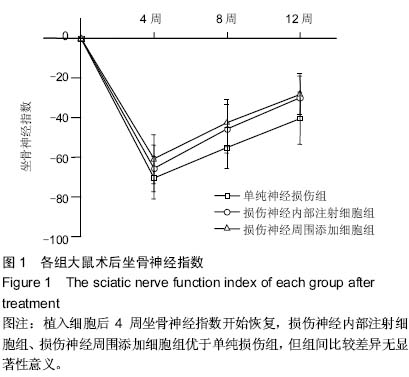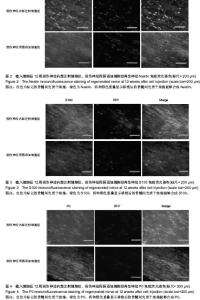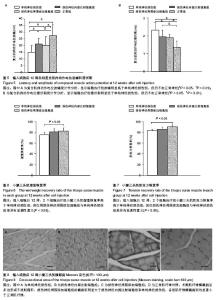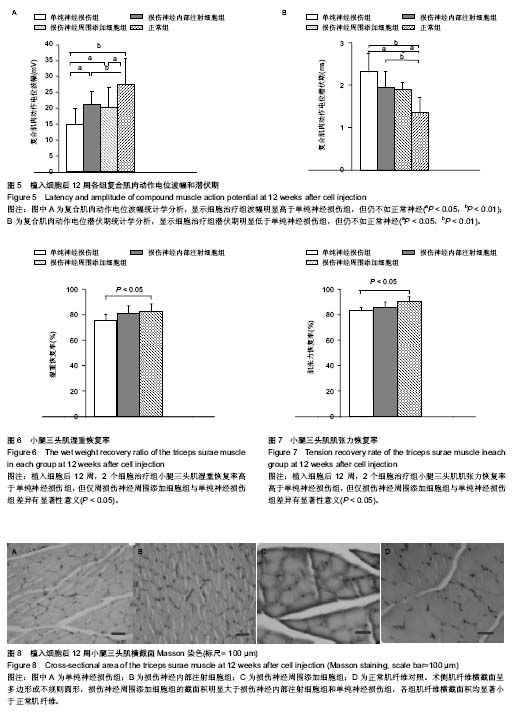| [1] Siemionow M, Brzezicki G. Chapter 8: Current techniques and concepts in peripheral nerve repair. Int Rev Neurobiol. 2009; 87:141-172.
[2] Millesi H. Techniques for nerve grafting. Hand Clin. 2000; 16(1): 73-91.
[3] Dornseifer U, Matiasek K, Fichter MA, et al. Surgical therapy of peripheral nerve lesions: current status and new perspectives. Zentralbl Neurochir. 2007;68(3):101-110.
[4] Roganovic Z, Ilic S, Savic M. Radial nerve repair using an autologous denatured muscle graft: comparison with outcomes of nerve graft repair. Acta Neurochir (Wien). 2007; 149(10):1033-1038.
[5] Xue C, Hu N, Gu Y, et al. Joint use of a chitosan/PLGA scaffold and MSCs to bridge an extra large gap in dog sciatic nerve. Neurorehabil Neural Repair. 2012;26(1):96-106.
[6] Frerichs O, Fansa H, Schicht C,et al. Reconstruction of peripheral nerves using acellular nerve grafts with implanted cultured Schwann cells. Microsurgery. 2002;22(7):311-315.
[7] .Lin H, Liu F, Zhang C, et al. Pluripotent hair follicle neural crest stem-cell-derived neurons and schwann cells functionally repair sciatic nerves in rats. Mol Neurobiol. 2009; 40(3):216-223.
[8] Zhang CS, Lv G.Repair of sciatic nerve defects using tissue engineered nerves.Neural Regen Res. 2013;8(21): 1985- 1994.
[9] Wang Y, Zhao Z, Ren Z, et al. Recellularized nerve allografts with differentiated mesenchymal stem cells promote peripheral nerve regeneration. Neurosci Lett. 2012;514(1): 96-101.
[10] Wang D, Liu XL, Zhu JK, et al. Repairing large radial nerve defects by acellular nerve allografts seeded with autologous bone marrow stromal cells in a monkey model. J Neurotrauma. 2010;27(10):1935-1943.
[11] Smit X, van Neck JW, Ebeli MJ, et al. Static footprint analysis: a time-saving functional evaluation of nerve repair in rats. Scand J Plast Reconstr Surg Hand Surg. 2004;38(6):321- 325.
[12] 赵喆. 以天然神经细胞外基质为支架构建组织工程神经修复周围神经缺损[D].北京:军医进修学院,2011.
[13] Zhao Z, Wang Y, Peng J, et al. Repair of nerve defect with acellular nerve graft supplemented by bone marrow stromal cells in mice. Microsurgery. 2011;31(5):388-394.
[14] 沈宁江,朱家恺.小腿三头肌肌力评价坐骨神经运动功能恢复的实验研究[J].中华显微外科杂志,1994,17(4):266-268.
[15] 赵曙光,李辉,范慧敏. 低温冷冻神经损伤与再生研究[J]. 同济大学学报:医学版,2010,31(4):15-18.
[16] Fasano VA, Peirone SM, Zeme S, et al. Cryoanalgesia. Ultrastructural study on cryolytic lesion of sciatic nerve in rat and rabbit. Acta Neurochir Suppl (Wien). 1987;39:177-180.
[17] 孙江森,李彪,龚跃昆. 骨髓间充质干细胞标记及示踪技术的研究与进展[J]. 中国组织工程研究,2012,16(6):1107-1110.
[18] Chopp M, Li Y. Treatment of neural injury with marrow stromal cells. Lancet Neurol. 2002;1(2):92-100.
[19] Zhang YR,Zhang H,Zhang GC,et al.Combining acellular nerve allografts with brain-derived neurotrophic factor transfected bone marrow mesenchymal stem cells restores sciatic nerve injury better than either intervention alone. Neural Regen Res. 2014;9(20): 1814-1819.
[20] Totey S, Totey S, Pal R, et al. Adult stem cells: a clinical update. J Stem Cells. 2009;4(2):105-121.
[21] Wang J, Ding F, Gu Y, et al. Bone marrow mesenchymal stem cells promote cell proliferation and neurotrophic function of Schwann cells in vitro and in vivo. Brain Res. 2009;1262:7-15.
[22] Guérette D, Khan PA, Savard PE, et al. Molecular evolution of type VI intermediate filament proteins. BMC Evol Biol. 2007;7: 164.
[23] Cocchia D, Miani N. Immunocytochemical localization of the brain-specific S-100 protein in the pituitary gland of adult rat. J Neurocytol. 1980;9(6):771-782.
[24] Ghandour MS, Langley OK, Labourdette G, et al. Specific and artefactual cellular localizations of S 100 protein: an astrocyte marker in rat cerebellum. Dev Neurosci. 1981;4(1):66-78.
[25] 张殿英,姜保国,傅忠国,等. 周围神经损伤后S-100蛋白的分布和变化研究[J].中国矫形外科杂志,2002,9(4):348-350.
[26] Kim S, Jeon TJ, Oberai A, et al. Transmembrane glycine zippers: physiological and pathological roles in membrane proteins. Proc Natl Acad Sci U S A. 2005;102(40):14278- 14283.
[27] Kochański A. Mutations in the Myelin Protein Zero result in a spectrum of Charcot-Marie-Tooth phenotypes. Acta Myol. 2004;23(1):6-9.
|







